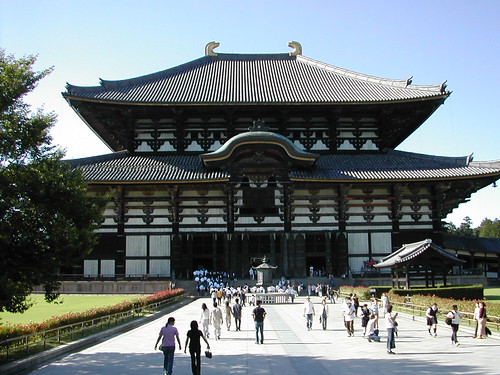
Contemplate the detail and beauty of simplicity is an essential part of Zen philosophy, which makes up the mysteries of Japanese culture. The architecture on the islands of the Rising Sun is deeply influenced by this wisdom, which the traveler sees in his travels.
The amazing combination of nature and architecture creates a unique harmony of sounds, aromas and nuances. Japanese architecture captivates and invites exploring. All the senses are necessary to fully enjoy its beauty and simplicity of worship. The majestic and at the same time, simple gardens stretching over the four islands that make up Japan, and contrasts with the thousands of Buddhist temples and Shinto shrines.
Tokyo is the city perhaps more in this sense, the best shows this contrast. A huge city with more than 12 million people live where tradition and modernity of its architecture.
Due to the earthquake that hit the city in 1923 and the bombings in World War II, most of the buildings are very new and therefore modern. However, this city succeeds in combining the customs and the most innovative technological advances.
The Imperial Palace, built on the ruins of the old Palace of Edo, is the residence of the imperial family. Surrounded by a wall with several towers and luxurious doors, only U.S. the Japanese Royalty, ie not open to the public.
The oldest temple in the capital is the Asakusa Kannon, built in the seventh century as an offering to the Buddhist goddess of mercy. As required by the country’s oriental culture, you must pass by a large box where they burn incense to purify the soul to enter the monument.

Built under the strict rules of the Shinto religion, the Meiji Shrine is one of the most sacred monument of Japanese cultures. The three wooden doors that give access to it are made of cypress wood with more than seven hundred thousand years old. A few hours hence increasing castle Himeji-jo, the most amazing Japanese building still standing. The fort is popularly known as Blanca Garza, alluding to the shape and color of its skyline.
Kyoto, Japanese capital for over a thousand years was the religious and cultural life. So there is one of the most famous sites of Japan, Kinkaku-ji Temple, also known as the Golden Pavilion. In addition to other oratorios as Tenryu-ji or-tenmangu Kitano Shrine is located in this area famous goddess of a thousand arms, an image of wood protected by 28 guards.

Nara is the largest monument Todai-ji Temple. It is the largest wooden building in the world, with more than 40 meters high and about 50 long. There lies the Great Buddha, a bronze sculpture weighing more than four hundred tons. A few minutes from the sanctuary are the Nara-Koen Park, which at the time of peak, with 175 buildings. The Hall of the National Treasures of conservation of several pieces that are no longer part of the building.

Little can be seen in the devastated Hiroshima. Today is merely an industrial city. The Gembaku Domu, known as the Dome of the atomic bomb is the only reference in the bottom of this ancient city and punished.

Osaka is famous for its cuisine. Osaka Castle is the most important architecture of the city. Another strong point, in addition to your kitchen, are the performances at the National Bunraku Theater and the Museum of Oriental Ceramics, which is a beautiful collection of ceramic china.
4 Responses to “Japan”
Leave a Reply
You must be logged in to post a comment.
marzo 17th, 2012 at 9:09 pm
[…] Walking around is like touring Kyoto eleven centuries of history of Japan. In its day it was the seat of the imperial court as well as an important religious and artistic center. In fact, the Japanese theater and dance reached its height during the Muromachi period (1334-1568) in Kyoto. Come visit and learn something more of this spectacular city in Japan. […]
marzo 18th, 2012 at 1:43 am
[…] capital of Japan, located on the island Honshu, the main Japanese archipelago. Besides being the largest city, is […]
marzo 18th, 2012 at 4:23 am
[…] a city that we should not miss in Japan is Kyoto. In Kyoto, we will find the magic of traditional Japan where people still wearing kimono, mixed with the modernity of Japan raging […]
marzo 18th, 2012 at 1:52 pm
[…] Japan, there are lodging options for all tastes and pockets and, as usual, we must differentiate between […]